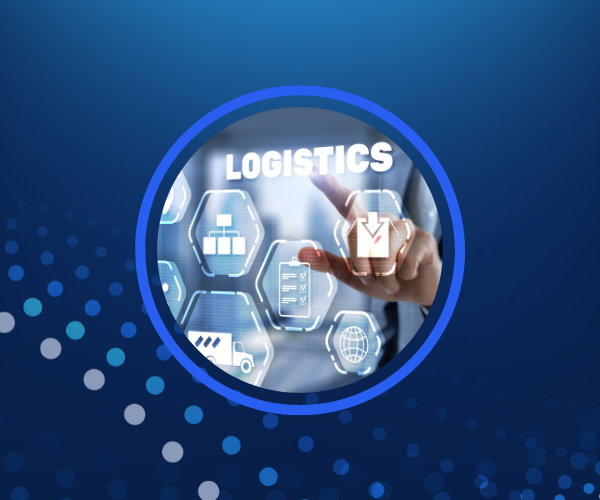Battery logistics: an overview of the challenges and opportunities in 2024
In an economic landscape where the demand for batteries is soaring, understanding the operational complexities behind this market’s supply chain becomes paramount for automotive manufacturers aiming to stay ahead of the competition. From transportation and storage to safety and regulations, we address the latest industry insights, and analyse both the challenges and the opportunities.
Following years of high volatility, it is hoped that 2024 will present a more stable picture for the battery logistics market, not least because the growth in demand for electric vehicles (EVs) will bring a new dynamic, making it an important trend to watch. But, as we’ll explore here, there’s much more to the picture than EVs alone.
The transportation and storage of lithium batteries present a challenge, not least because they need to be stored safely throughout their entire journey along the supply chain. It will be news to no one that they can overheat and ignite if not transported properly. Yet this niche presents a huge opportunity – the market potential is huge as demand reaches an inflection point.
Why? – The demand for lithium batteries is set to increase over 2024 as electric vehicles continue to grow in popularity, despite a drop in demand during 2023, according to analytical company S&P Global.
The increase in volume will result in more partnerships, alliances and joint ventures between manufacturers and dealers to handle production and distribution. This will present challenges and constraints for supply chains, S&P says, but also opportunities.
In terms of battery logistics, challenges persist, including complex supply chains, infrastructure development for raw materials and batteries, not to mention the ever-present need for efficiency. Other challenges for battery logistics include (but are by no means limited to):
- Changing regulations: with the increase in popularity in electric vehicles, and the EU’s desire to undercut the Chinese market with favourable laws and schemes, battery logistic regulation is a fluid space. Make sure you comply with transport regulations and stay alert to shifting laws.
- There are legal requirements for packaging lithium batteries, such as packing them all individually and having a secondary outer box. However, the entire process of packaging is not regulated. In fact, so much of the packaging is down to individual suppliers. One of the challenges this presents is balancing efficiency and safety – and it’s an extremely important balance to strike. We would go so far as to say that it could make or break your business, and present a point of difference between you and your competitors. So, this is both a challenge and an opportunity. If others are more efficient, you will fall behind – one accident, and you’ll lose customers overnight. Get it right, on the other hand, and you’ll gain authority in the industry.
- Listing dangerous goods: as lithium batteries become more common in a variety of products, it is a challenge to know what does and does not use them. This can be especially costly when you unwittingly fail to register lithium batteries as a dangerous good during transportation, which is why it’s always a good idea to have a Dangerous Goods Safety Advisor (DGSA). As just one example, in 2014, a UK-based supplier of medical goods and services was fined £3,000 plus costs for breaching international DGR, Dangerous Goods Regulations, (Croner-i). This was because four lithium manganese dioxide battery packs, used in medical defibrillators, were not packed in an approved container, nor were they marked, and the shipment was not declared as containing dangerous goods.
There are also several opportunities to consider:
- As mentioned, as the demand for electric vehicles grows, a company that can reliably transport batteries will be in a good place to capitalise on the market. S&P Global says electric charging ports for cars have increased from three to 15 million between 2019 and 2023. They predict it will be 70 million by 2030 – the market is set to explode, and anyone who can ensure the batteries don’t too will reap the rewards.
- The biggest opportunities are predicted to be across Europe and North America, which have relatively immature markets but are likely to be centres of substantial future growth in EVs, according to consultancy firm McKinsey.
- By being seen to prioritise safe, expert-led storage, transport, and disposal of batteries, businesses can put themselves head and shoulders above their competition, across the entirety of Europe.
This ever-evolving space is full of challenges but also opportunities. This is why securing a solid operational infrastructure to turn challenges into positive points of difference is both imperative and timely. This constantly expanding branch of the energy industry is essentially low-hanging fruit for businesses – and now is the right time to capitalise on it.
We say this with confidence, because DANX Carousel Group is extremely proud to be a leading pan-European, specialist logistics provider, with the most comprehensive end-to-end solutions.
We provide outstanding time-critical expertise and deliver it every single day, thanks to our dedicated team of over 850 skilled professionals, who handle a diverse range of logistics challenges across Europe.
Our teams continuously adapt to the evolving needs of the industry, and through our collective skill and experience, we ensure our clients receive exceptional service as standard.



